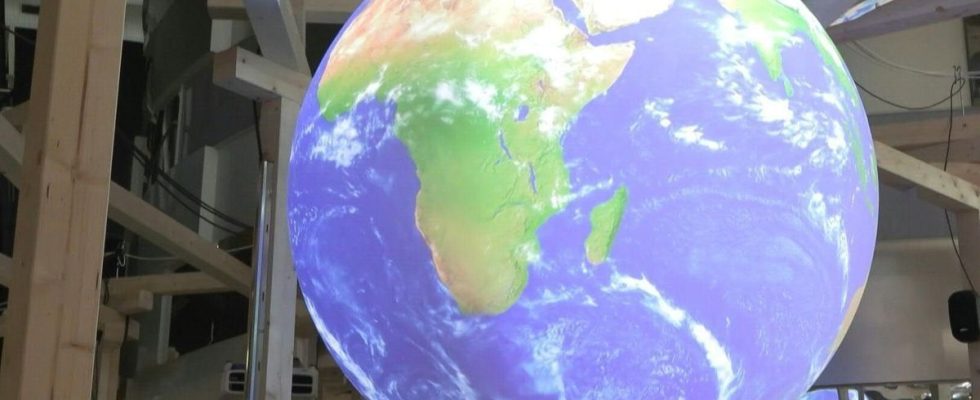Published on
Updated
Reading 1 min.
A new permanent exhibition “Climate emergency” opened to the public on Tuesday at the Cité des sciences in Paris, to understand the challenges of global warming but also to give keys to act on an individual and collective scale.
“My hope is that visitors, on leaving this exhibition, will have a little better understanding of how our activities influence our environment, our climate“, explained to AFP Jean Jouzel, its scientific commissioner.
“But it is also a commitment to action: we try to say that action is possible“, underlined the paleoclimatologist, who has observed the evolution of the climate for 50 years.
A vast fresco representing the human activities at the origin of climate change welcomes the visitor, with a brief text recalling that they generate CO2, whose high concentration “causes climate change“, and that it is not an “opinion”.
“There is an observation today is that climate change exists, there is a scientific consensus, and we start from this postulate“, says Adrien Stalter, curator of the exhibition.
This is guided bya global approach, i.e. understanding the mechanisms that govern greenhouse gas emissions and how we can act on these emissions” And “adapt our societies“, he underlines.
The visit, accessible from the age of 15 independently (or earlier for accompanied children) is freely organized around three parts: “decarbonize“, “anticipate” And “let’s act“.
The information, taken from the most recent scientific sources, takes the form of comic strips, maps or “data sculptures“Here brightly colored pyramids illustrate the carbon footprint of different foods (the largest, bright red, indicates the significant footprint of beef), there stacks of colored tubes show the carbon footprint of Paris.
Without hiding anything from the stakes, the exhibition does not highlight the disasters – megafires, floods, devastating cyclones – which make the news. Its designers wanted a tone “warm” And “which goes against eco-anxiety“, underlines Adrien Stalter.
The solutions exist and are based both on individual and even more collective choices, as illustrated in the exhibition by a vast map representing the density of cycle paths in Europe.
“If you want to get around by bike, the infrastructure must be put in place by the municipalities“, emphasizes Jean Jouzel. “Everyone has a role to play“.
